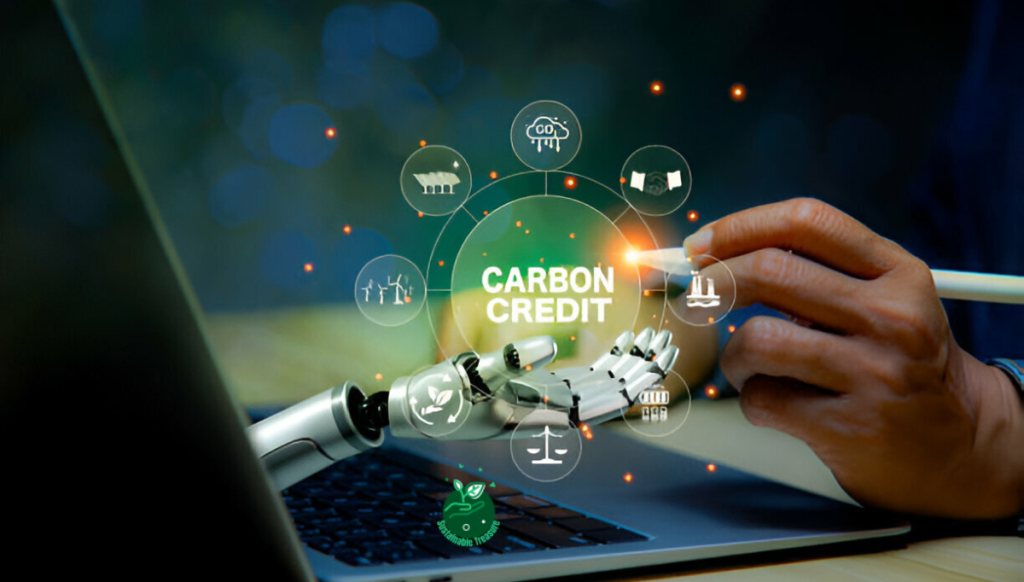Table of Contents
What is the growth of ESG bonds and green bonds? These innovative financial instruments are rapidly gaining traction as investors seek to align their portfolios with environmental and social values.
ESG bonds and green bonds channel capital towards sustainable projects, driving positive change in areas like renewable energy, affordable housing, and ethical governance.
As a socially conscious investor, I understand the power of these bonds. Years ago, my grandmother invested in a company that later faced environmental scandals, leaving her disillusioned.
This experience taught me the importance of aligning investments with personal values. ESG bonds offer a solution, allowing us to generate returns while contributing to a more sustainable future.
In this post, I’ll delve deeper into the world of ESG bonds and green bonds, exploring their benefits, risks, and the pivotal role they play in shaping a more equitable and eco-friendly world.
Here we go.
What are ESG Bonds?

Environmental, Social, and Governance (ESG) bonds are debt securities issued by companies, governments, or organizations to fund projects with positive environmental and/or social impacts. These bonds align with the issuers’ ESG principles and goals, allowing investors to support sustainable initiatives while earning returns.
The Triple Bottom Line
ESG bonds address the “triple bottom line” of sustainability:
Environmental: Projects that benefit the environment, such as renewable energy, clean water, or biodiversity conservation.
Social: Initiatives that improve societal welfare, like affordable housing, healthcare, or education.
Governance: Promoting ethical corporate governance, transparency, and stakeholder accountability.
By investing in ESG bonds, investors can generate financial returns while contributing to a more sustainable future.
Green Bonds: A Subset of ESG Bonds
Green bonds are a specific type of ESG bond, with proceeds earmarked solely for environmental projects. These can include:
- Renewable energy projects (solar, wind, hydroelectric)
- Energy efficiency initiatives
- Sustainable waste management
- Clean transportation
- Sustainable agriculture
- Climate change adaptation
Green bonds provide transparency, as issuers must disclose how the funds will be used and report on the environmental impact.
The Growth of Green Bonds
According to the Climate Bonds Initiative, the global green bond market reached a cumulative $1.5 trillion by the end of 2022, with annual issuance surpassing $500 billion. This exponential growth reflects the increasing demand for sustainable investments and the global shift towards a low-carbon economy.
Benefits of ESG Bonds and Green Bonds
For Issuers
- Access to Capital: ESG bonds allow issuers to tap into a growing pool of socially responsible investors, diversifying their funding sources.
- Enhance Reputation: Issuing ESG bonds demonstrates a commitment to sustainability, enhancing the issuer’s reputation and appeal to environmentally conscious stakeholders.
- Cost Savings: ESG projects, such as energy efficiency initiatives, can result in long-term cost savings for the issuer.
For Investors
- Diversification: ESG bonds provide portfolio diversification opportunities while aligning investments with personal values.
- Potential for Higher Returns: Studies suggest that companies with strong ESG practices may outperform their peers financially in the long run.
- Positive Impact: Investing in ESG bonds contributes to a more sustainable future, addressing environmental and social challenges.
Types of ESG Bonds
ESG bonds come in various forms, each addressing specific sustainability goals:
| Bond Type | Description |
|---|---|
| Green Bonds | Proceeds finance environmental projects (renewable energy, clean water, etc.) |
| Social Bonds | Proceeds fund initiatives with positive social impacts (affordable housing, education, etc.) |
| Sustainability Bonds | Proceeds support a mix of environmental and social projects |
| Sustainability-Linked Bonds | Financial incentives tied to the issuer’s performance against predetermined sustainability targets |
| Transition Bonds | Support companies transitioning towards more sustainable business models and practices |
Risks and Challenges
While ESG bonds offer numerous benefits, investors should be aware of potential risks and challenges:
- Greenwashing Concerns: Some critics argue that certain ESG bonds may be used for greenwashing, where companies exaggerate their environmental or social commitments.
- Lack of Standardization: ESG reporting and labeling criteria can vary, making it difficult to compare and evaluate different bond offerings.
- Liquidity Constraints: The ESG bond market is still relatively small, which could lead to liquidity issues for certain issuances.
- Performance Risk: Like any investment, ESG bonds carry the risk of underperformance or default, particularly for corporate issuers.
To mitigate these risks, investors should conduct thorough due diligence, seek third-party verification, and diversify their ESG bond holdings.
FAQs

What Is The Difference Between ESG Bonds and Green Bonds?
ESG bonds are a broader category that encompasses bonds that finance projects with positive environmental, social, or governance impacts. Green bonds, on the other hand, are a specific type of ESG bond focused solely on financing environmental projects, such as renewable energy, clean transportation, or sustainable agriculture.
While green bonds have a narrower scope, focusing exclusively on environmental initiatives, ESG bonds can fund a wider range of sustainable projects, including those with social or governance objectives, such as affordable housing, education, or promoting ethical business practices.
How Can Investors Evaluate The Credibility of ESG Bonds?
Investors should exercise due diligence when evaluating the credibility of ESG bonds. This can involve reviewing the issuer’s ESG reporting, seeking third-party verification from reputable organizations, and examining the bond’s framework and use of proceeds.
It’s also important to look for alignment between the bond’s stated objectives and the issuer’s overall sustainability strategy and performance.
Investors should be wary of potential greenwashing, where companies exaggerate or misrepresent their environmental or social commitments.
What Are The Advantages of Investing in ESG Bonds For Institutional Investors?
Institutional investors, such as pension funds, endowments, and asset managers, can benefit from investing in ESG bonds in several ways. First, ESG bonds allow them to align their investments with their organization’s values and sustainability goals, responding to increasing stakeholder pressure for responsible investing.
Additionally, ESG bonds can provide portfolio diversification and potentially mitigate long-term risks associated with unsustainable business practices.
Some studies also suggest that companies with strong ESG performance may offer better long-term financial returns, making ESG bonds an attractive investment opportunity.
How Do Green Bonds Contribute To The Transition Towards a Low-Carbon Economy?

Green bonds play a crucial role in financing the transition towards a low-carbon economy by channeling capital into projects that reduce greenhouse gas emissions and mitigate the impacts of climate change.
By investing in renewable energy, energy efficiency, and clean transportation initiatives, green bonds support the development and deployment of sustainable technologies and infrastructure.
Furthermore, the transparency and reporting requirements associated with green bonds can increase accountability and drive further investment in climate-friendly projects.
As the demand for green bonds grows, it creates a positive feedback loop, incentivizing more companies and governments to prioritize sustainable practices and invest in low-carbon solutions.
What Challenges Do Issuers Face When Issuing ESG Bonds?
Issuers of ESG bonds may face several challenges. One of the primary challenges is the need for robust reporting and disclosure frameworks to ensure transparency and accountability.
Issuers must clearly define and measure the environmental and social impacts of their projects, which can be complex and resource-intensive.
Additionally, issuers may face higher administrative and compliance costs associated with obtaining third-party verification and adhering to ESG bond standards.
There is also a risk of potential reputational damage if the issuer fails to meet the stated objectives or if the bond’s proceeds are not utilized as intended.
How can individual investors participate in the ESG bond market?
Individual investors can participate in the ESG bond market in several ways. One option is to invest in mutual funds or exchange-traded funds (ETFs) that focus on ESG bonds or sustainable fixed-income investments.
These funds provide diversification and professional management, making it easier for individual investors to access the ESG bond market.
Alternatively, investors with larger portfolios may consider purchasing individual ESG bonds directly from issuers or through their financial advisors.
This approach allows for more control over bond selection and tailoring investments to specific sustainability preferences.
What role do governments play in promoting ESG bonds and green bonds?
Governments play a crucial role in promoting ESG bonds and green bonds through various policies and initiatives. Many governments have implemented tax incentives, subsidies, or regulatory frameworks to encourage the issuance and investment in these sustainable financial instruments.
For example, some countries have established official green bond standards or guidelines, providing clarity and credibility for issuers and investors.
Governments can also lead by example by issuing their own sovereign green bonds or sustainability bonds to finance public infrastructure projects aligned with their climate and sustainability goals.
How can ESG bonds and green bonds contribute to achieving the United Nations Sustainable Development Goals (SDGs)?
ESG bonds and green bonds can play a significant role in achieving the United Nations Sustainable Development Goals (SDGs) by mobilizing capital towards projects that address various environmental and social challenges.
For instance, green bonds can finance projects related to affordable and clean energy (SDG 7), sustainable cities and communities (SDG 11), and climate action (SDG 13).
Social bonds can support initiatives focused on reducing poverty (SDG 1), ensuring quality education (SDG 4), and promoting good health and well-being (SDG 3).
By aligning their investment strategies with the SDGs, investors can contribute to the global effort towards sustainable development while generating financial returns.
The Future of ESG Bonds and Green Bonds
As the global shift towards sustainability accelerates, the demand for ESG bonds and green bonds is expected to continue growing. Key factors driving this growth include:
- Regulatory Changes: Governments worldwide are introducing regulations and incentives to promote sustainable finance and combat climate change.
- Investor Demand: Institutional and individual investors are increasingly prioritizing ESG considerations in their investment strategies.
- Corporate Commitments: More companies are setting ambitious sustainability targets and issuing ESG bonds to finance their transition.
- Market Standardization: Efforts are underway to establish common standards and frameworks for ESG bond issuance and reporting, enhancing transparency and comparability.
As the ESG bond market matures, it is poised to play a pivotal role in funding the global transition towards a more sustainable and equitable future.
Final Thoughts
The growth of ESG bonds and green bonds represents a paradigm shift in the financial industry, where sustainability and social responsibility are becoming integral components of investment decisions.
As awareness of environmental and social challenges continues to rise, these innovative financial instruments offer a powerful tool for channeling capital towards a more sustainable future.
By investing in ESG bonds and green bonds, individuals and institutions can align their financial objectives with their values, contributing to a more equitable and environmentally conscious world.
While challenges remain, the trajectory of this market is clear – a future where sustainable investing is not just a niche, but a mainstream practice that drives positive change on a global scale.



